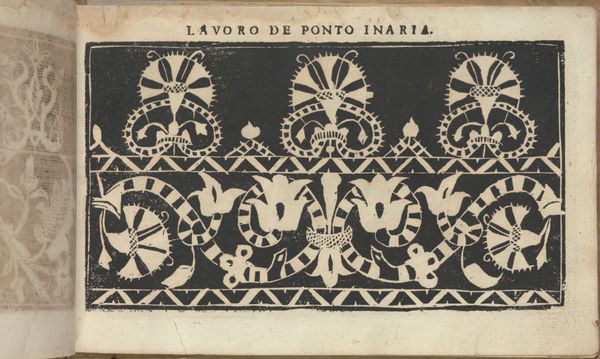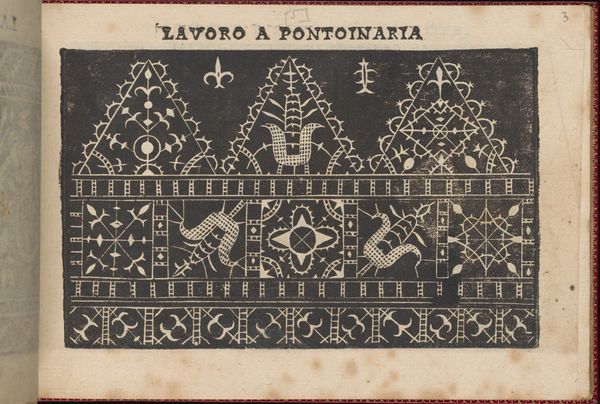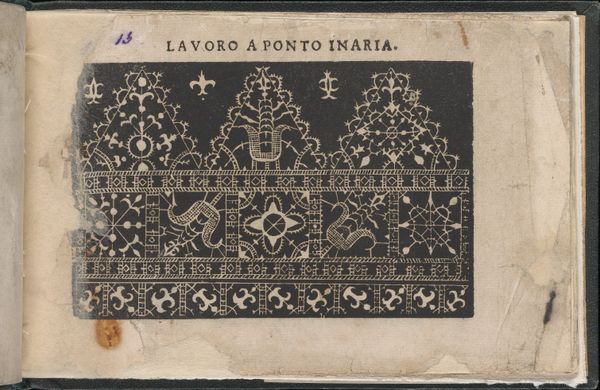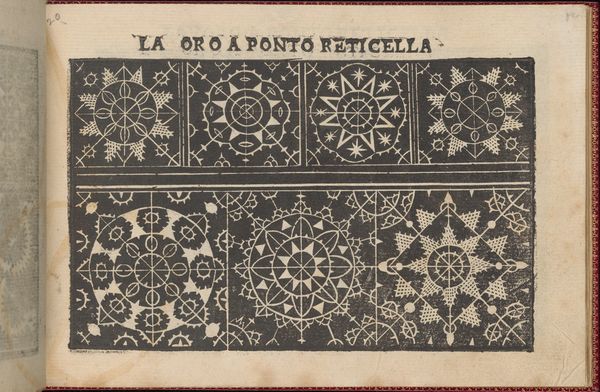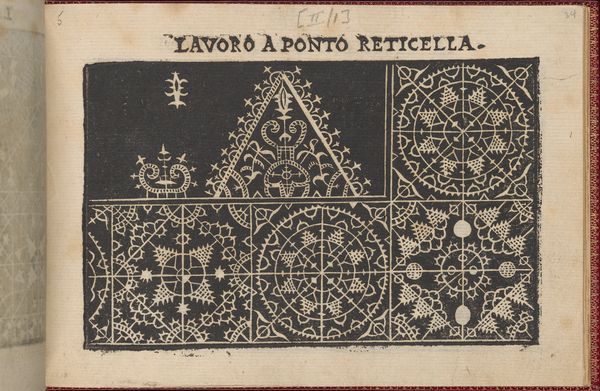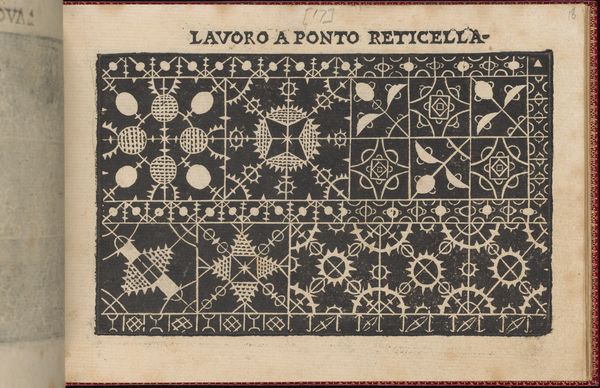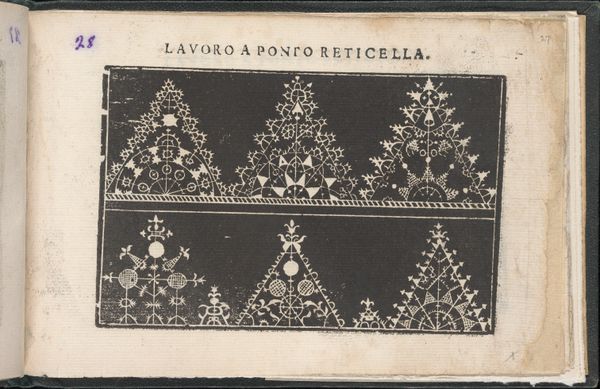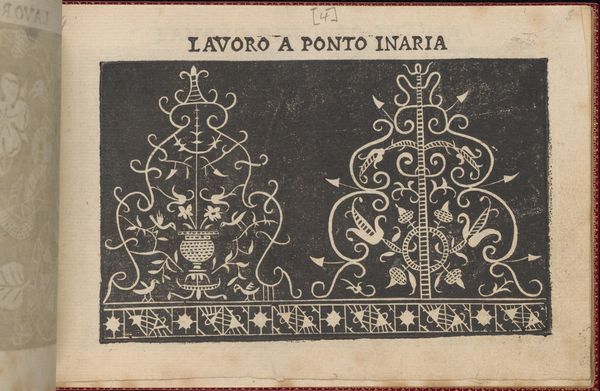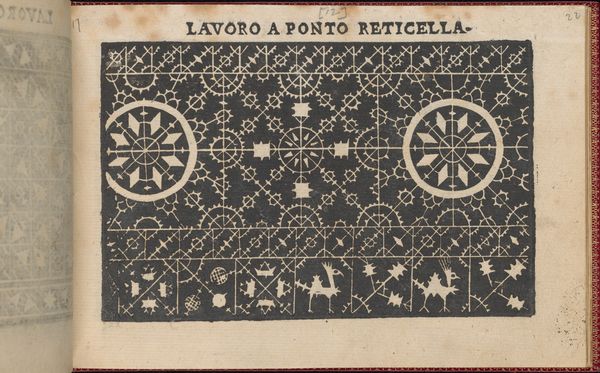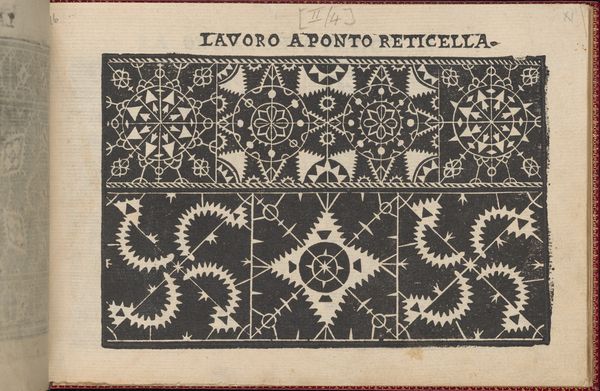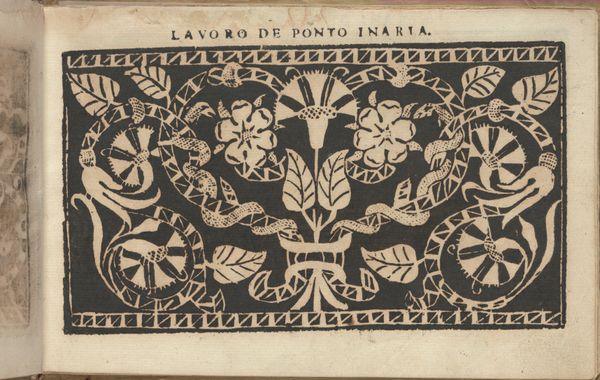
Pretiosa Gemma delle virtuose donne, page 10 (recto) 1600
0:00
0:00
drawing, graphic-art, ornament, print, engraving
#
drawing
#
graphic-art
#
ornament
# print
#
line
#
decorative-art
#
italian-renaissance
#
engraving
Dimensions: Overall: 4 3/4 x 6 11/16 in. (12 x 17 cm)
Copyright: Public Domain
Curator: This etching, "Pretiosa Gemma delle virtuose donne," dating back to around 1600, showcases the exquisite designs of Isabella Catanea Parasole. It is currently housed at the Metropolitan Museum of Art. Editor: Wow, it strikes me immediately as meticulously architectural. I'm fascinated by how the dark engraving highlights the stark lines. You almost expect to find these designs adorning a building facade! Curator: Exactly! Parasole was renowned for her pattern books, providing designs for lace, embroidery, and other needlework—essentially blueprints for artisans of her time. Look closely at the patterns: the geometric precision contrasts with organic, flowing motifs. It’s this dance that truly enchants. Editor: What about the labor inherent in something like this? Each of these designs represents hours, probably days, of someone's skilled craft being poured into the work. The etching feels like it abstracts that labor, right? The design simplifies all of the intense work to make it feel simple when it is anything but. Curator: Absolutely. Each print was itself the result of labor! Then think about the labor these prints inspire, multiplying and shifting from graphic art, drawing, engraving, and printmaking to thread and cloth... Each repetition shifts the nature of its impact somehow. Don't you agree? Editor: Absolutely! Also, how accessible do you think it actually was for, say, working-class women to pick up these books? They might inspire more accessible or reinterpreted, altered, less-costly adaptations. That would probably change their use-value significantly! Curator: It is interesting to ponder that these prints themselves are tools! Like, imagine finding one of these. The transformation it takes is something like the chrysalis of potential it must hold for other craftswomen to realize and refine those visions of the book. Editor: To view art in this way helps us move beyond seeing just ornamentation! You realize you're seeing this long history and lineage of human hands shaping matter, refining tools, shifting across generations. Curator: It almost makes the patterns feel like secret messages now! Editor: In a way, they are! Thanks for a revealing look!
Comments
No comments
Be the first to comment and join the conversation on the ultimate creative platform.
